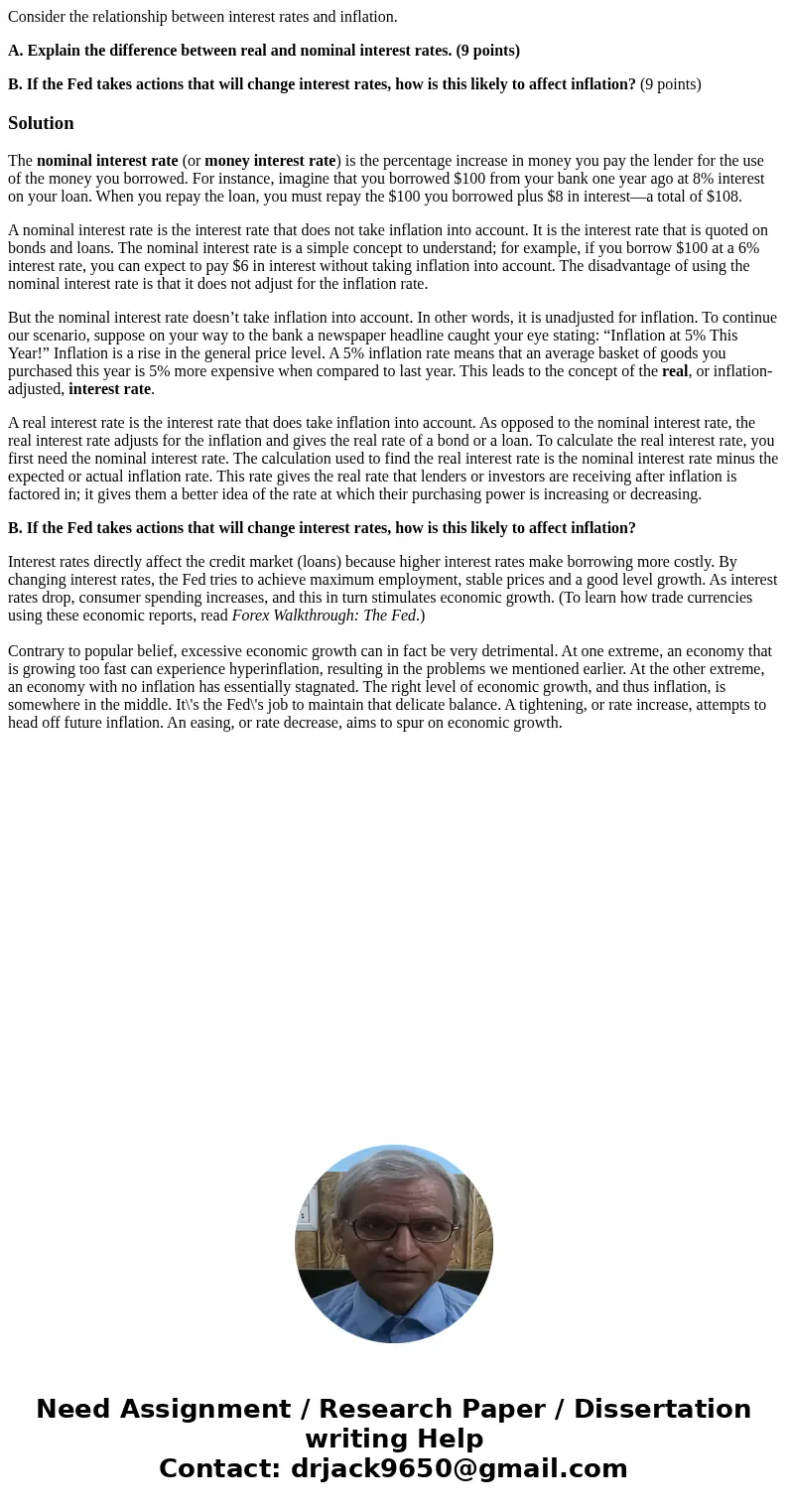Consider the relationship between interest rates and inflati
Consider the relationship between interest rates and inflation.
A. Explain the difference between real and nominal interest rates. (9 points)
B. If the Fed takes actions that will change interest rates, how is this likely to affect inflation? (9 points)
Solution
The nominal interest rate (or money interest rate) is the percentage increase in money you pay the lender for the use of the money you borrowed. For instance, imagine that you borrowed $100 from your bank one year ago at 8% interest on your loan. When you repay the loan, you must repay the $100 you borrowed plus $8 in interest—a total of $108.
A nominal interest rate is the interest rate that does not take inflation into account. It is the interest rate that is quoted on bonds and loans. The nominal interest rate is a simple concept to understand; for example, if you borrow $100 at a 6% interest rate, you can expect to pay $6 in interest without taking inflation into account. The disadvantage of using the nominal interest rate is that it does not adjust for the inflation rate.
But the nominal interest rate doesn’t take inflation into account. In other words, it is unadjusted for inflation. To continue our scenario, suppose on your way to the bank a newspaper headline caught your eye stating: “Inflation at 5% This Year!” Inflation is a rise in the general price level. A 5% inflation rate means that an average basket of goods you purchased this year is 5% more expensive when compared to last year. This leads to the concept of the real, or inflation-adjusted, interest rate.
A real interest rate is the interest rate that does take inflation into account. As opposed to the nominal interest rate, the real interest rate adjusts for the inflation and gives the real rate of a bond or a loan. To calculate the real interest rate, you first need the nominal interest rate. The calculation used to find the real interest rate is the nominal interest rate minus the expected or actual inflation rate. This rate gives the real rate that lenders or investors are receiving after inflation is factored in; it gives them a better idea of the rate at which their purchasing power is increasing or decreasing.
B. If the Fed takes actions that will change interest rates, how is this likely to affect inflation?
Interest rates directly affect the credit market (loans) because higher interest rates make borrowing more costly. By changing interest rates, the Fed tries to achieve maximum employment, stable prices and a good level growth. As interest rates drop, consumer spending increases, and this in turn stimulates economic growth. (To learn how trade currencies using these economic reports, read Forex Walkthrough: The Fed.)
Contrary to popular belief, excessive economic growth can in fact be very detrimental. At one extreme, an economy that is growing too fast can experience hyperinflation, resulting in the problems we mentioned earlier. At the other extreme, an economy with no inflation has essentially stagnated. The right level of economic growth, and thus inflation, is somewhere in the middle. It\'s the Fed\'s job to maintain that delicate balance. A tightening, or rate increase, attempts to head off future inflation. An easing, or rate decrease, aims to spur on economic growth.

 Homework Sourse
Homework Sourse